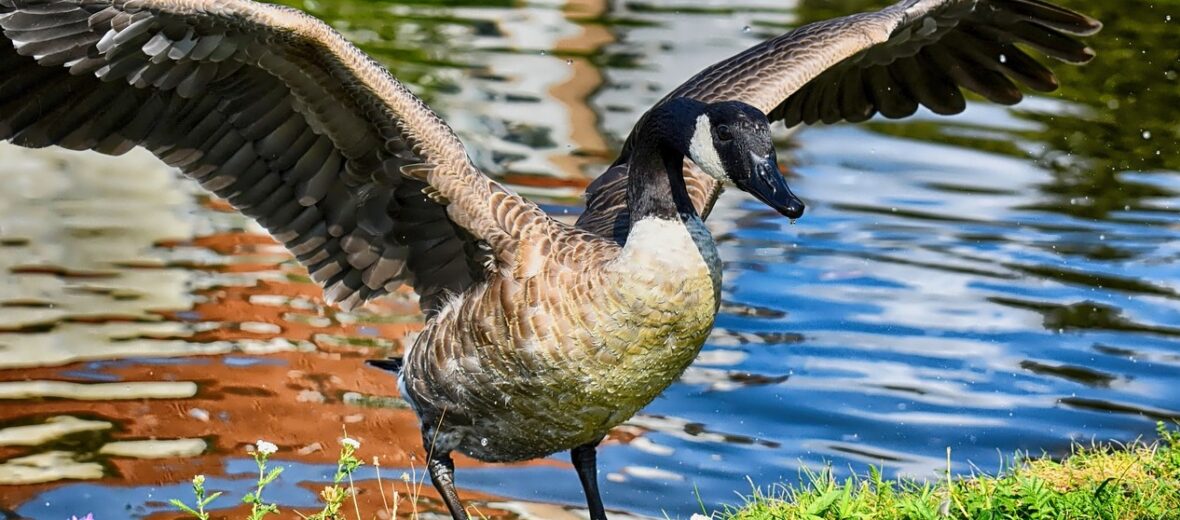
The Canada goose is the largest goose in the world, with a subspecies called the giant Canadian goose providing some specimens weighing over 20 lbs! Scientists think that there are approximately 11 known subspecies of geese in Canada, and most vary in appearance. The Canada Goose is well known for flying in a V-formation and its loud “honk” is unmistakable. Due to the habitats that humans have created, lawns, parks, golf courses, and more, these geese have increased their numbers from 500,000 in the 1980s to more than 5 million today.
First the Stats…
Scientific name: Branta canadensis
Weight: Up to 14 lbs.
Length: Up to 3.6 feet
Wingspan: Up to 6.1 feet
Lifespan: Up to 24 years
Now on to the Facts!
1.) A Canada goose can be very defensive, especially when it comes to defending their young.
2.) Canada geese typically nest in the same area as their parents did. Many times they even use the same nest every year.
3.) Due to their size, they may use a short “runway” to build up speed for water take-offs.
4.) Baby geese (goslings) are very impressionable and will typically follow just about anything that moves, thinking it is their mom. They have been known to follow ducks, dogs, and even humans.
5.) Goslings are able to dive up to 40 feet underwater by the time they are only 1 day old!
But wait, there’s more on the Canada goose!
6.) Goslings learn to fly between 2 – 3 months of age. During the first year of their lives, they continue to stay with their parents. They also follow their parents during their first migration before forming into groups with other young geese, called gang broods.
7.) During warmer weather, these geese will molt, and will be unable to fly for up to 6 weeks. During this time they hang out next to bodies of water in order to have an escape route from land-based predators.
Did you know…?
The Canada goose can fly up to 70 mph, with a strong tailwind. They also migrate up to 3,000 miles each year! Plus they can fly at altitudes of up to 9,000 feet!
8.) When a goose perceives danger it will stretch out its neck and honk loudly. They also bite, hiss, and slap at the threat with their wings.
9.) Their main predators are foxes, coyotes, crows, raccoons, bears, wolves, owls, and eagles.
10.) Canada geese are omnivores who’s diet consists of grasses, vegetation, aquatic plants, grains, fish, and insects.
But wait, there’s still more on the Canada goose!
11.) A group of geese has many names, including a chevron, flock, gaggle, and string.
Did you know…?
These geese are notoriously aggressive, even attacking their reflection in windows, as well as humans and pets that happen to get too close.
12.) Canada geese are monogamous (mate for life) and begin searching for a partner between 2 – 3 years of age. If their partner dies, the goose will try to find another mating partner.
13.) Females lay between 4 – 7 eggs each season.
14.) The male violently defends the nest while the female incubates the eggs.
Now a Short Canada Goose Video!
Also, check out the Critter Science YouTube channel. Videos added frequently!
Want to suggest a critter for me to write about? Let me know here.



